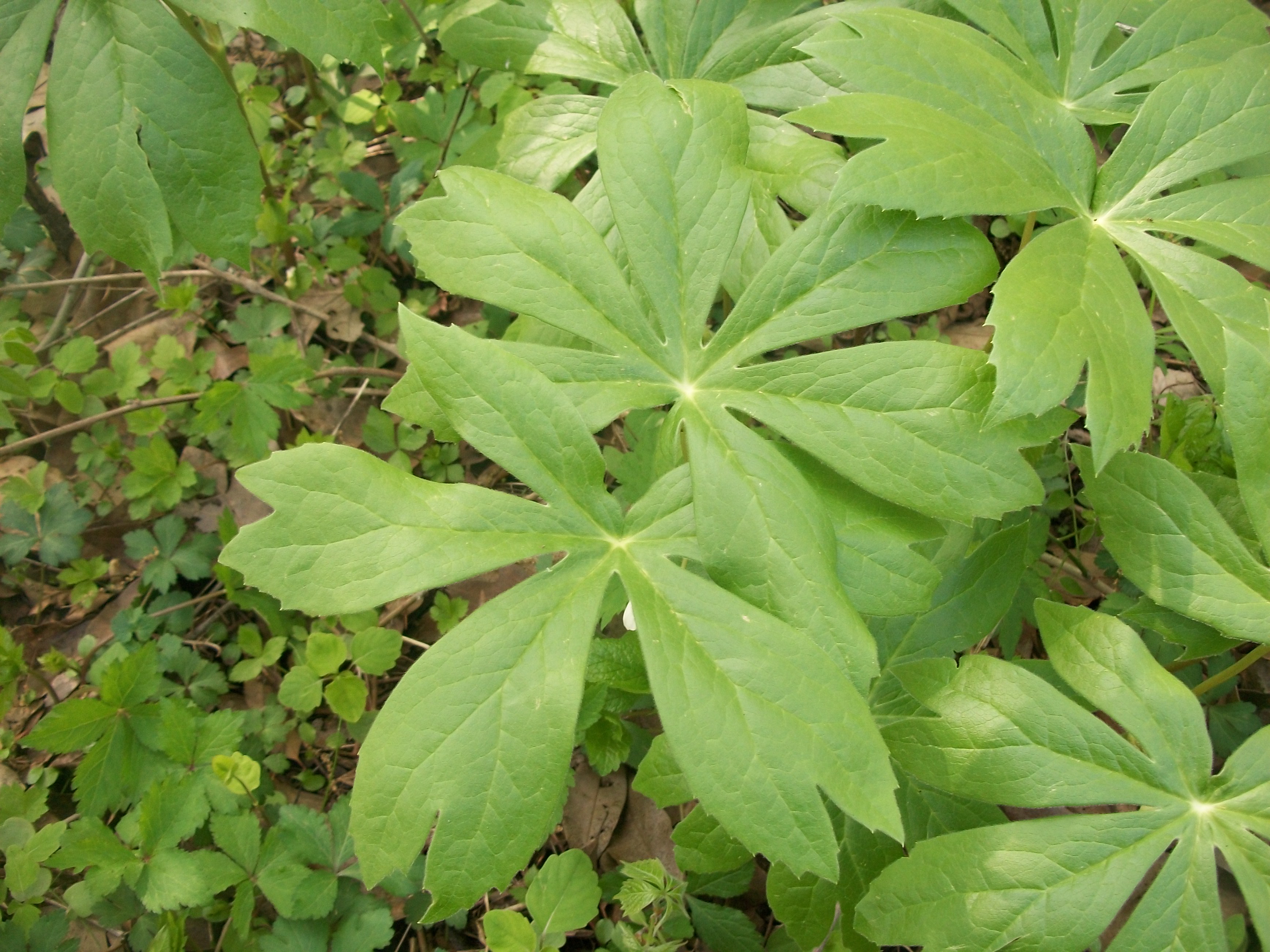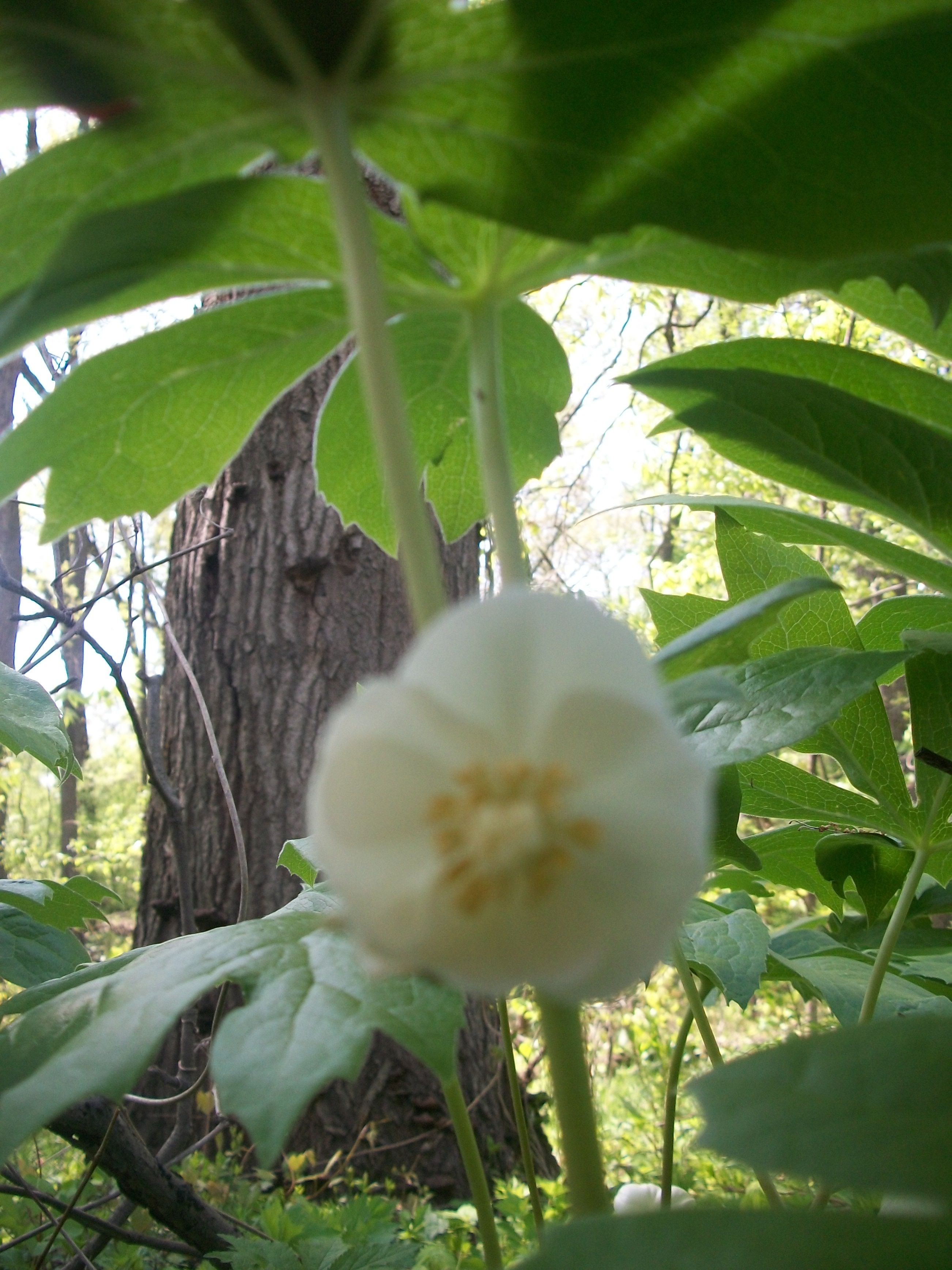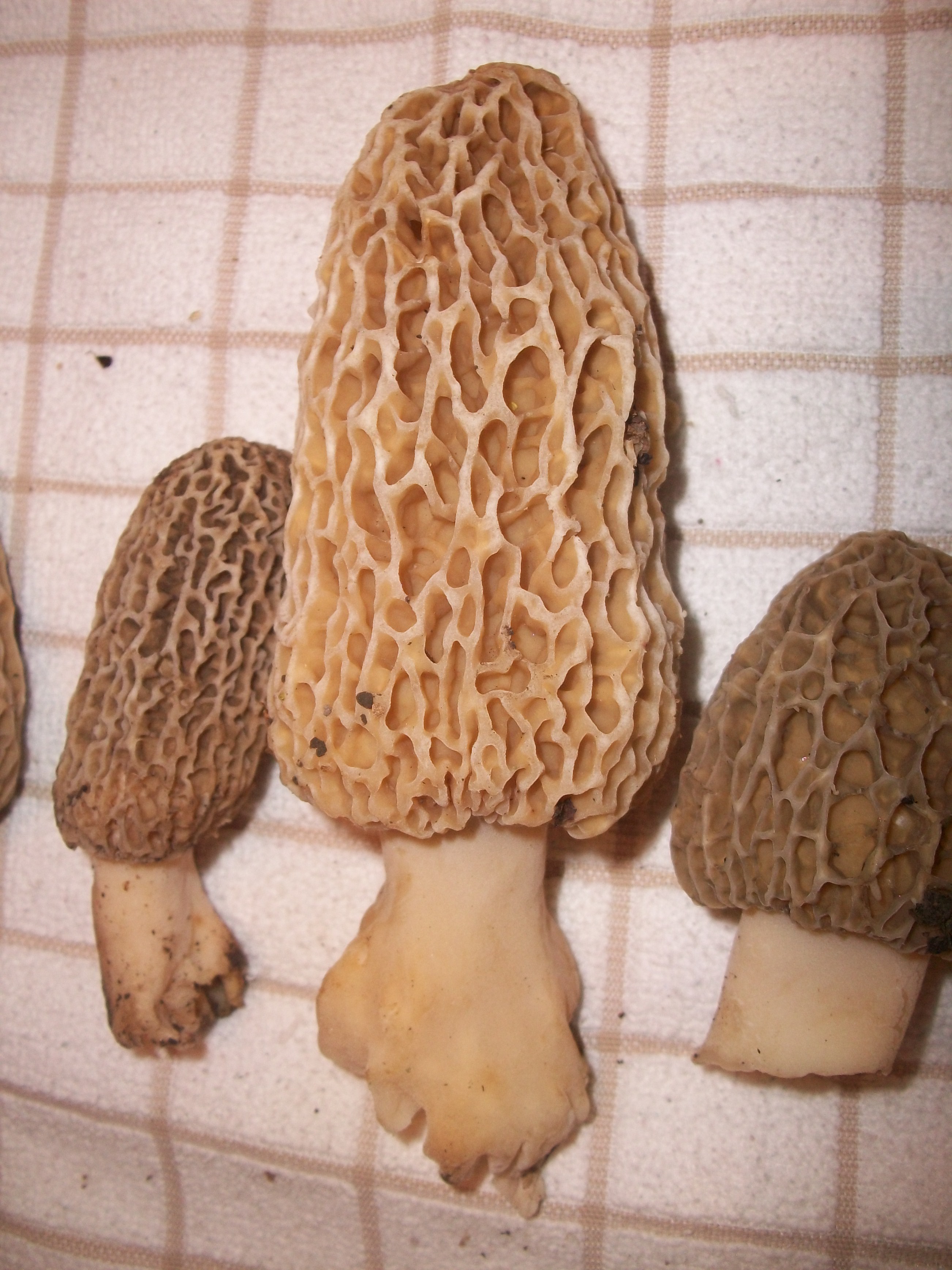I thought that each month I’d try to feature local foragables (yay, I invented a word!), wildflowers, animals, ect as I come across them in my rambles. I had meant to start this last month, but I was a bit preoccupied at the time, and never got the post completed…but, better late than never!
Last month, on a trek to the zoo with the kids and my brother, I walked right past a May apple patch in Forest Park. Unfortunately, I only had my pocket camera with the imprecise zoom and was unable to get a good shot of the flower-every time I *thought* I had it focused, the darn thing refocused on the leaves in the background instead. And, as if May apples weren’t something to be excited about on their own, my grandfather brought home the motherload of morels from his secret mushroom hunting spot in southern Illinois, some of which my grandma was kind enough to make for me!
mmmmmmmmm, morrells…
Anyhoo, I thought I’d include a bit about each plant (or organism)-not an entire write up like I do with some of the other herbs, but some basic info, along with whatever notable information I come across.
*****
Mayapple Podophyllum peltatum Barberry family (Berberidaceae)
The May apple is a pretty interesting plant. It has a gorgeously unique foliage (awesome pics at this site) and (as a bit of a misnomer) flowers in April/May, producing a fruit in July/August. The entire plant, with exception of the properly ripened fruit (specifically, the inner flesh of the fruit) is extremely toxic. I have never tried the fruit-never caught at the right time, which is said to be when the fruit turns yellow like a lemon and is soft to the touch. And, from what I have read, many people that would ordinarily try the May apple have trouble finding fully ripe fruit, which are a favorite of wildlife (another common name for the May apple is the “raccoon berry”). Description of the taste varies from “tasteless” to “slightly lemon like” to “melon-ish”.

The May apple is native to the eastern North America, and is an easy to grow addition (from the rhizome) for shady areas in native landscaping. It can be grown from seed or from rhizomes, but is more commonly found, carpeting the forest floor in Eastern woodlands. I have seen recommendations that persons wanting to harvest the fruit, either in a wild patch or a garden plot, should put screening around the area in question to keep out small animals that enjoy the fruits.
Something I find interesting is that although mayapple spreads easily by underground rhizomes once a single plant becomes well-rooted, mayapple often needs a bit of help getting started from seed.
Box turtles are an important catalyst for mayapple because these unique reptiles are one of the most important depositors of the plants’ heavily coated seeds. Without passing through the digestive tract of animals, mayapple seeds have very low germination rates, and box turtles appear to have one of the better suited “mechanics” for making the seeds more ready to grow after the land-loving turtles enjoy the low-hanging mayapple fruit.
The Great Outdoors: Mayapple a unique plant; By Geordan T. Howell

Magically, the plant is considered to have properties similar to that of mandrake but they are not related (mandrake and American mandrake are alternative common names for the May apple. I have seen some claim to use May apple root for protection, fertility and to draw wealth…though it seems to me that there are probably better (and less toxic) plants with these correspondences.* Additionally, the active chemicals in the plants have been under investigation for potential cancer treatments. Historically the plant was used by Native Americans as both a food source and medicinally**.
*There have been some anecdotal references that would indicate that powdering any part of this plant for use is a bad idea and can cause extreme skin and eye irritation and damage if handled improperly. **Ethnobotanical research suggests that various tribes used all parts of the plant medicinally, but most notably the root stock, and usually as an emetic, cathartic or laxative, after specific preparation.
*****
Morel Morchella esculenta, Morchella deliciosa
The morel is an extremely tasty ascocarp-a member of the family Ascomycota. As with all mushrooms, one should be certain of their skill, or the skill of the individual foraging before consumption. There are a number of fungi given the moniker false morels for their similarity.
Morchellas are normally found in forest areas. Their mycelium connect with tree roots; these relationships can be mycorrhizal or saprobic. Morchella typically form relationships with hardwood and conifer trees. They can often be found around ash, dying elms, or in apple orchards. Morchella deliciosa are often referred to as “tulip morels” or “hickory morels” because they are commonly found under these trees. The classis yellow morel is quite common in North America, but is not restricted to just this continent. Because Morchella fungi are so highly coveted for culinary uses, many researchers are studying the biological diversity of these organisms in order to ensure that they do not become threatened. Dalglelish and Jacobsen (2005) noted that the potential for inbreeding within Morchella esculenta is high, but that this species does not interbreed at high rates. The cultivation of Morchella species has proved difficult. While there are some detectable patterns in habitats and growth conditions, these are not consistent enough to be used for general cultivation.
Microbewiki










